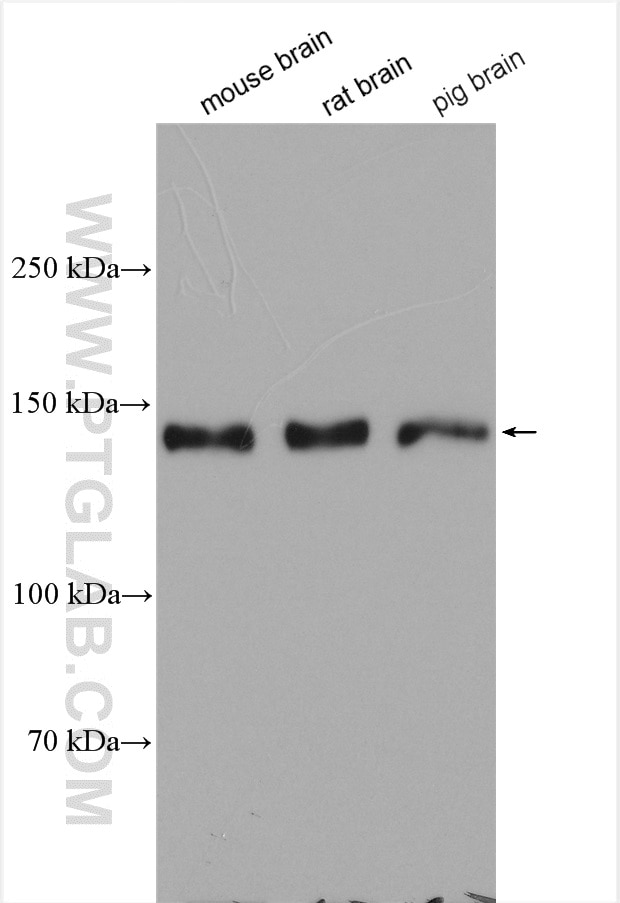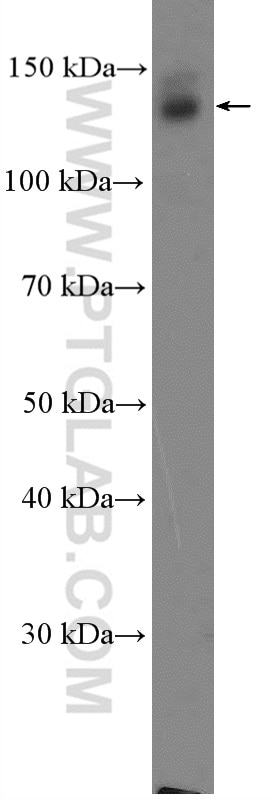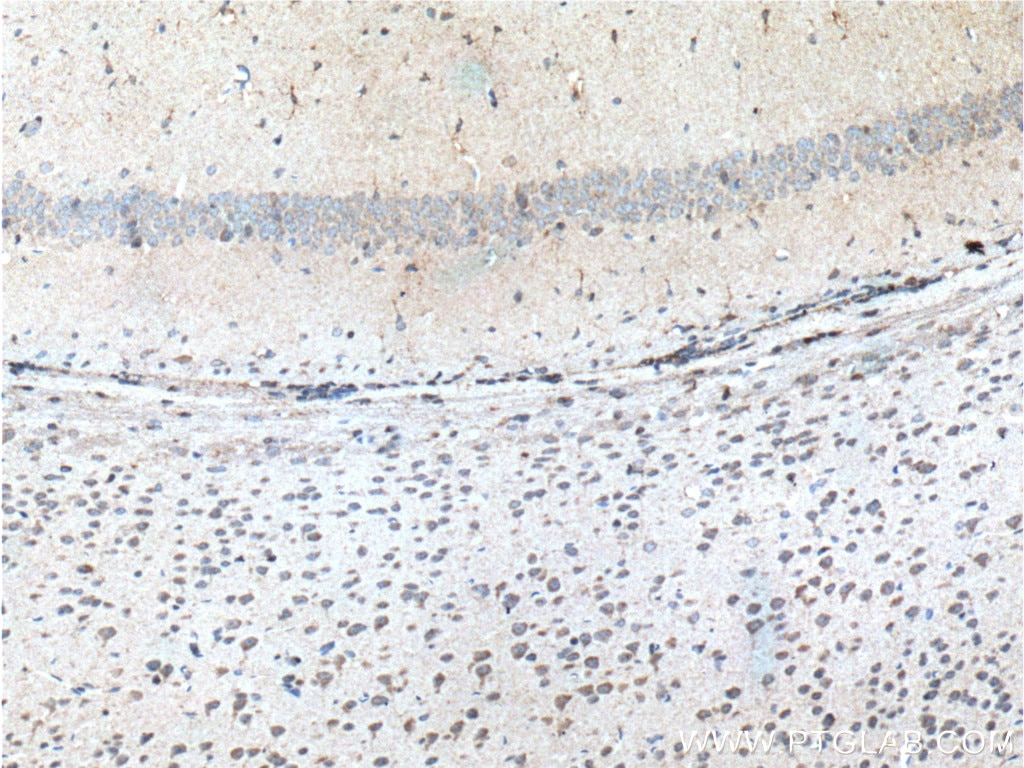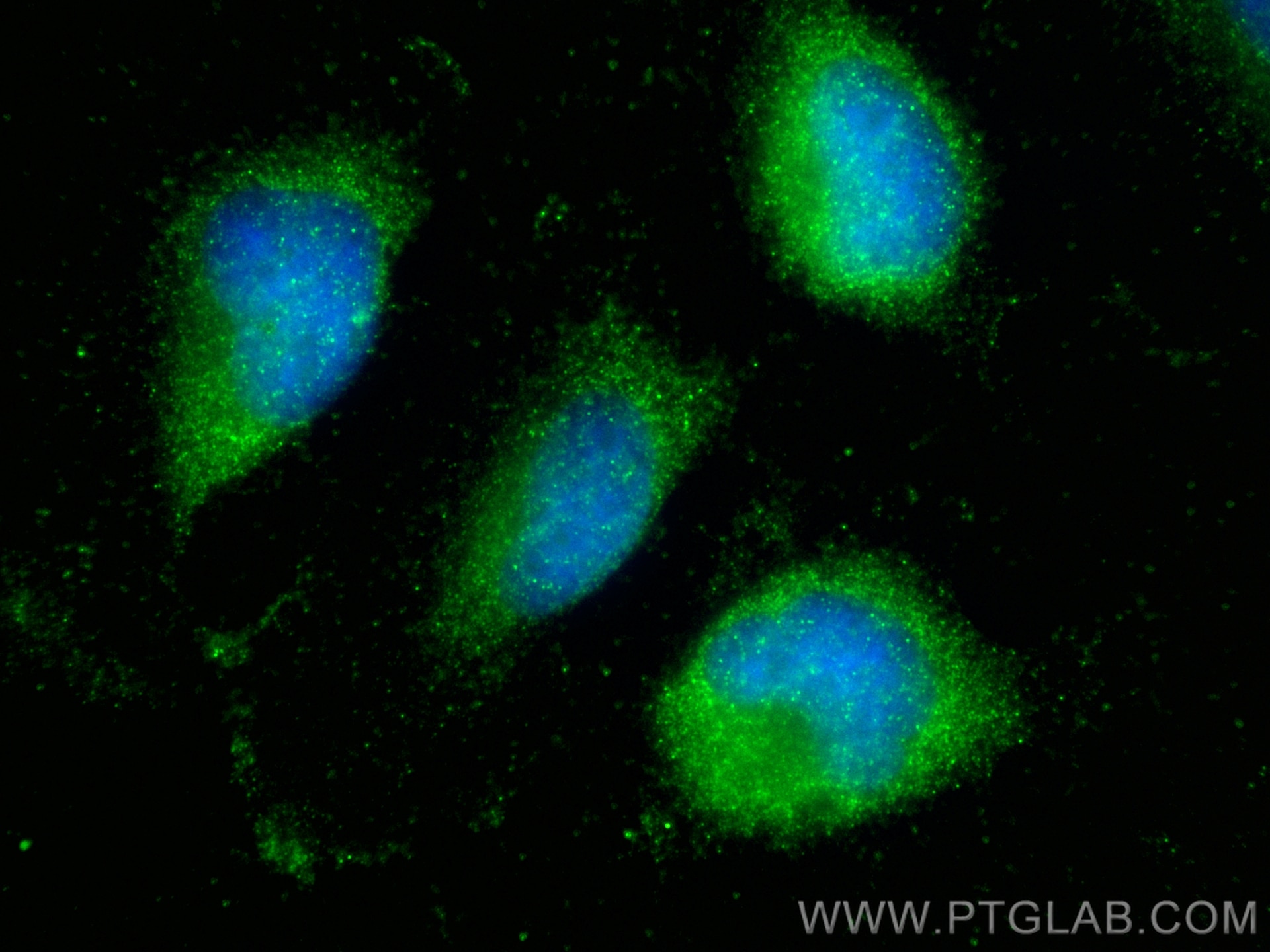Tested Applications
| Positive WB detected in | mouse brain tissue, rat brain tissues, pig brain tissues |
| Positive IP detected in | mouse brain tissue |
| Positive IHC detected in | mouse brain tissue Note: suggested antigen retrieval with TE buffer pH 9.0; (*) Alternatively, antigen retrieval may be performed with citrate buffer pH 6.0 |
| Positive IF/ICC detected in | U-251 cells |
Recommended dilution
| Application | Dilution |
|---|---|
| Western Blot (WB) | WB : 1:1000-1:4000 |
| Immunoprecipitation (IP) | IP : 0.5-4.0 ug for 1.0-3.0 mg of total protein lysate |
| Immunohistochemistry (IHC) | IHC : 1:50-1:500 |
| Immunofluorescence (IF)/ICC | IF/ICC : 1:50-1:500 |
| It is recommended that this reagent should be titrated in each testing system to obtain optimal results. | |
| Sample-dependent, Check data in validation data gallery. | |
Published Applications
| WB | See 7 publications below |
| IHC | See 1 publications below |
Product Information
19739-1-AP targets SYNGAP1 in WB, IHC, IF/ICC, IP, ELISA applications and shows reactivity with human, mouse, rat, pig samples.
| Tested Reactivity | human, mouse, rat, pig |
| Cited Reactivity | human, mouse |
| Host / Isotype | Rabbit / IgG |
| Class | Polyclonal |
| Type | Antibody |
| Immunogen |
Peptide Predict reactive species |
| Full Name | synaptic Ras GTPase activating protein 1 homolog (rat) |
| Calculated Molecular Weight | 1343 aa, 148 kDa |
| Observed Molecular Weight | 148 kDa |
| GenBank Accession Number | NM_006772 |
| Gene Symbol | SYNGAP1 |
| Gene ID (NCBI) | 8831 |
| RRID | AB_10638472 |
| Conjugate | Unconjugated |
| Form | Liquid |
| Purification Method | Antigen affinity purification |
| UNIPROT ID | Q96PV0 |
| Storage Buffer | PBS with 0.02% sodium azide and 50% glycerol, pH 7.3. |
| Storage Conditions | Store at -20°C. Stable for one year after shipment. Aliquoting is unnecessary for -20oC storage. 20ul sizes contain 0.1% BSA. |
Background Information
SYNGAP1, also named as KIAA1938, is the major constituent of the PSD essential for postsynaptic signaling. It's an inhibitory regulator of the Ras-cAMP pathway. SYNGAP1 is a member of the NMDAR signaling complex in excitatory synapses, it may play a role in NMDAR-dependent control of AMPAR potentiation, AMPAR membrane trafficking and synaptic plasticity. SYNGAP1 regulates AMPAR-mediated miniature excitatory postsynaptic currents. SYNGAP1 may be involved in certain forms of brain injury, leading to long-term learning and memory deficits Defects in SYNGAP1 are the cause of mental retardation autosomal dominant type 5 (MRD5).
Protocols
| Product Specific Protocols | |
|---|---|
| IF protocol for SYNGAP1 antibody 19739-1-AP | Download protocol |
| IHC protocol for SYNGAP1 antibody 19739-1-AP | Download protocol |
| IP protocol for SYNGAP1 antibody 19739-1-AP | Download protocol |
| WB protocol for SYNGAP1 antibody 19739-1-AP | Download protocol |
| Standard Protocols | |
|---|---|
| Click here to view our Standard Protocols |
Publications
| Species | Application | Title |
|---|---|---|
Front Aging Neurosci Impaired Learning and Memory Ability Induced by a Bilaterally Hippocampal Injection of Streptozotocin in Mice: Involved With the Adaptive Changes of Synaptic Plasticity. | ||
Neurochem Int Resveratrol ameliorates learning and memory impairments induced by bilateral hippocampal injection of streptozotocin in mice. | ||
Eur J Neurosci SynGAP is expressed in the murine suprachiasmatic nucleus and regulates circadian-gated locomotor activity and light-entrainment capacity. | ||
Neuroscience Further Studies on the Role of BTBD9 in the Cerebellum, Sleep-like Behaviors and the Restless Legs Syndrome | ||
J Nutr Biochem Hippocampal proteomic changes in high-fat diet-induced obese mice associated with memory decline |














